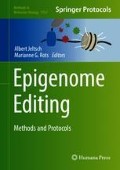Abstract
The ability to activate or repress specific genes in the brain could have a tremendous impact for understanding and treating neurological disorders. Artificial transcription factors based on zinc finger, TALE, and CRISPR/Cas9 programmable DNA-binding platforms have been widely used to regulate the expression of specific genes in cultured cells, but their delivery into the brain represents a critical challenge to apply such tools in live animals. In previous work, we developed a purified, zinc finger-based artificial transcription factor that could be injected systemically, cross the blood-brain barrier, and alter expression of a specific gene in the brain of an adult mouse model of Angelman syndrome. Importantly, our mode of delivery produced widespread distribution throughout the brain. Here we describe our most current methods for the production and purification of the factor, dosage optimization, and use of live animal fluorescence imaging to visualize the kinetics of distribution.
Access this chapter
Tax calculation will be finalised at checkout
Purchases are for personal use only
References
Blancafort P, Segal DJ, Barbas CF 3rd (2004) Designing transcription factor architectures for drug discovery. Mol Pharmacol 66(6):1361–1371
Polstein LR, Perez-Pinera P, Kocak DD, Vockley CM, Bledsoe P, Song L, Safi A, Crawford GE, Reddy TE, Gersbach CA (2015) Genome-wide specificity of DNA binding, gene regulation, and chromatin remodeling by TALE- and CRISPR/Cas9-based transcriptional activators. Genome Res 25(8):1158–1169. https://doi.org/10.1101/gr.179044.114
Thakore PI, Black JB, Hilton IB, Gersbach CA (2016) Editing the epigenome: technologies for programmable transcription and epigenetic modulation. Nat Methods 13(2):127–137. https://doi.org/10.1038/nmeth.3733
Thakore PI, Gersbach CA (2016) Design, assembly, and characterization of TALE-based transcriptional activators and repressors. Methods Mol Biol 1338:71–88. https://doi.org/10.1007/978-1-4939-2932-0_7
Cearley CN, Wolfe JH (2006) Transduction characteristics of adeno-associated virus vectors expressing cap serotypes 7, 8, 9, and Rh10 in the mouse brain. Mol Ther 13(3):528–537
Deverman BE, Pravdo PL, Simpson BP, Kumar SR, Chan KY, Banerjee A, Wu WL, Yang B, Huber N, Pasca SP, Gradinaru V (2016) Cre-dependent selection yields AAV variants for widespread gene transfer to the adult brain. Nat Biotechnol 34(2):204–209. https://doi.org/10.1038/nbt.3440
Gray SJ, Matagne V, Bachaboina L, Yadav S, Ojeda SR, Samulski RJ (2011) Preclinical differences of intravascular AAV9 delivery to neurons and glia: a comparative study of adult mice and nonhuman primates. Mol Ther 19(6):1058–1069. https://doi.org/10.1038/mt.2011.72
Bailus BJ, Pyles B, McAlister MM, O’Geen H, Lockwood SH, Adams AN, Nguyen JT, Yu A, Berman RF, Segal DJ (2016) Protein delivery of an artificial transcription factor restores widespread Ube3a expression in an Angelman syndrome mouse brain. Mol Ther 24(3):548–555. https://doi.org/10.1038/mt.2015.236
Gong B, Cao Z, Zheng P, Vitolo OV, Liu S, Staniszewski A, Moolman D, Zhang H, Shelanski M, Arancio O (2006) Ubiquitin hydrolase Uch-L1 rescues beta-amyloid-induced decreases in synaptic function and contextual memory. Cell 126(4):775–788. https://doi.org/10.1016/j.cell.2006.06.046
Wagstaff KM, Jans DA (2006) Protein transduction: cell penetrating peptides and their therapeutic applications. Curr Med Chem 13(12):1371–1387
Mae M, Langel U (2006) Cell-penetrating peptides as vectors for peptide, protein and oligonucleotide delivery. Curr Opin Pharmacol 6(5):509–514
Bhakta MS, Henry IM, Ousterout DG, Das KT, Lockwood SH, Meckler JF, Wallen MC, Zykovich A, Yu Y, Leo H, Xu L, Gersbach CA, Segal DJ (2013) Highly active zinc-finger nucleases by extended modular assembly. Genome Res 23(3):530–538. gr.143693.112 [pii]. https://doi.org/10.1101/gr.143693.112
Bhakta MS, Segal DJ (2010) The generation of zinc finger proteins by modular assembly. Methods Mol Biol 649:3–30. https://doi.org/10.1007/978-1-60761-753-2_1
Lee CM, Cradick TJ, Fine EJ, Bao G (2016) Nuclease target site selection for maximizing on-target activity and minimizing off-target effects in genome editing. Mol Ther 24(3):475–487. https://doi.org/10.1038/mt.2016.1
O’Geen H, Ren C, Nicolet CM, Perez AA, Halmai J, Le VM, Mackay JP, Farnham PJ, Segal DJ (2017) dCas9-based epigenome editing suggests acquisition of histone methylation is not sufficient for target gene repression. Nucleic Acids Res 45(17):9901–9916
Gaj T, Liu J, Anderson KE, Sirk SJ, Barbas CF 3rd (2014) Protein delivery using Cys2-His2 zinc-finger domains. ACS Chem Biol 9(8):1662–1667. https://doi.org/10.1021/cb500282g
Acknowledgment
We thank Alexa Adams, Jennifer Trang Nguyen, Victoria Le, Anvita Komarla, Joanna Watterson, Andy Tran, Joshua Mandella, Ruth Le, and Michelle McAllister for their assistance with the experiments. We thank Enoch Baldwin and Sarah Lockwood for expert advice and discussions in developing these methods. Imaging work was performed at the Center for Molecular and Genomic Imaging (CMGI), University of California, Davis. We would like to acknowledge Michelle Connell for her help with Maestro 2 imaging. This work was supported by the NIH (NS071028), the Angelman Syndrome Foundation, and the Foundation for Angelman Syndrome Therapeutics. B.J.B. was also funded by an NSF fellowship (0707429) and a grant to UC Davis from the Howard Hughes Medical Institute through the Med into Grad Initiative (56005706) and a CTSC pilot study (TR000002). Maestro imaging was supported by a CMGI pilot grant.
Author information
Authors and Affiliations
Corresponding author
Editor information
Editors and Affiliations
Rights and permissions
Copyright information
© 2018 Springer Science+Business Media, LLC
About this protocol
Cite this protocol
Pyles, B., Bailus, B.J., O’Geen, H., Segal, D.J. (2018). Purified Protein Delivery to Activate an Epigenetically Silenced Allele in Mouse Brain. In: Jeltsch, A., Rots, M. (eds) Epigenome Editing. Methods in Molecular Biology, vol 1767. Humana Press, New York, NY. https://doi.org/10.1007/978-1-4939-7774-1_12
Download citation
DOI: https://doi.org/10.1007/978-1-4939-7774-1_12
Published:
Publisher Name: Humana Press, New York, NY
Print ISBN: 978-1-4939-7773-4
Online ISBN: 978-1-4939-7774-1
eBook Packages: Springer Protocols

